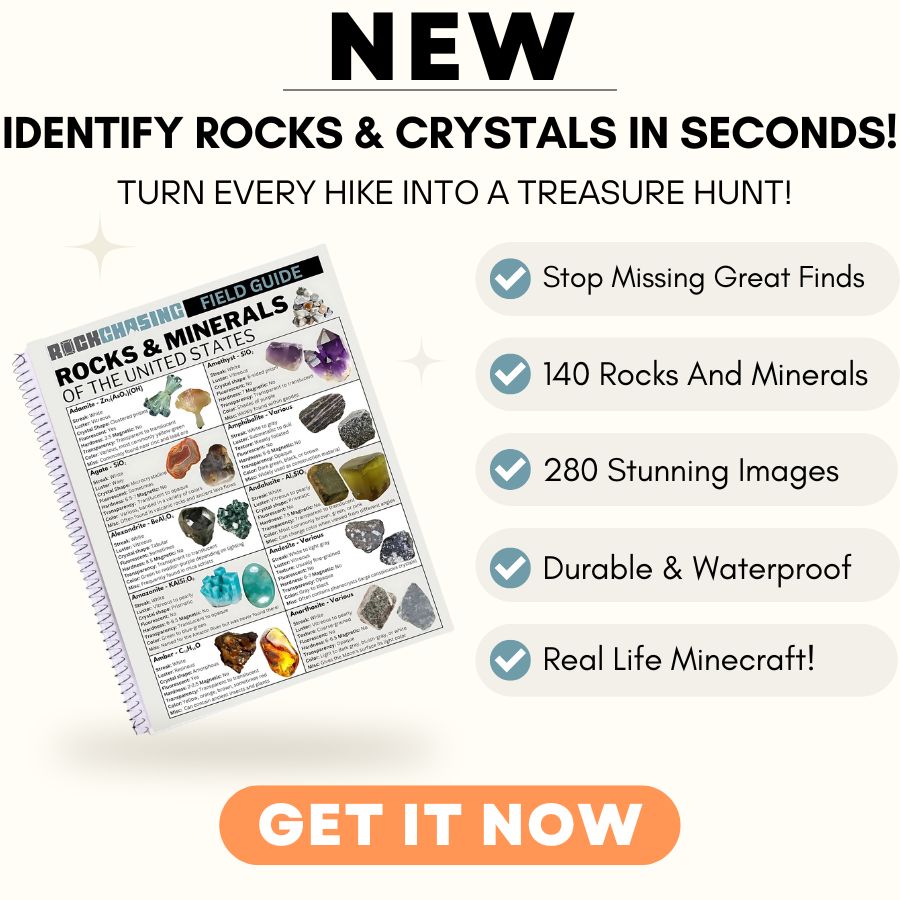Geodes are like nature’s surprise eggs, filled with sparkling crystals inside a plain-looking rock. Our state is a treasure trove for these hidden gems, with its many different landscapes that make it perfect for rock hounds.
If you’re itching to crack open your own crystal-filled wonder, you’re in the right place!
This article will show you the best spots in our state to find geodes. We’ll also share some handy tips to make your geode hunting adventure a success.
So grab your hammer and get ready to discover the beauty hiding in ordinary-looking rocks all around this state!
How Geodes From Here
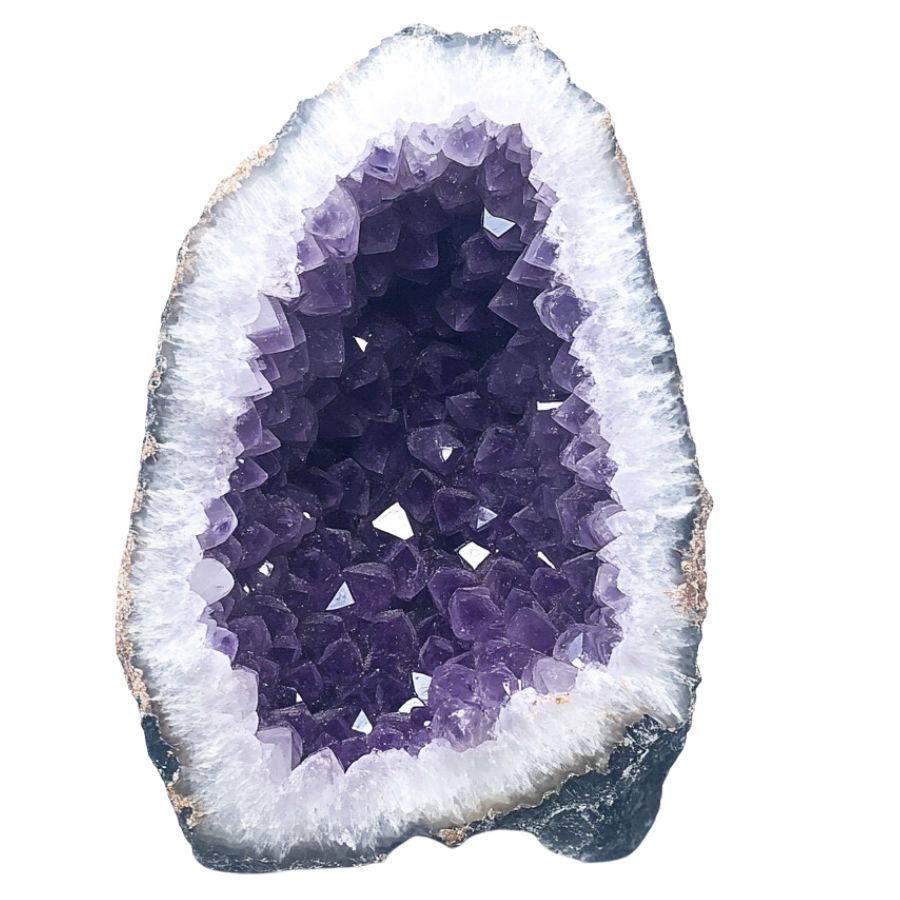
Geodes form when bubbles in volcanic rocks or spaces in sedimentary rocks get filled with minerals over time.
First, water rich in minerals like quartz or calcite seeps into the hollow space. As the water evaporates, it leaves behind the minerals, which slowly build up layer by layer.
Eventually, these minerals create a crystal lining inside the geode. The outer shell stays rough, while the inside becomes a sparkling treasure.
The process can take thousands, even millions, of years, making each geode a unique and beautiful time capsule of Earth’s natural forces.
The Types Of Geodes Found in the US
There are many fascinating varieties of geodes that can be found across the United States, including in our own state. Each type is distinctly beautiful and intriguing:
Amethyst Geode
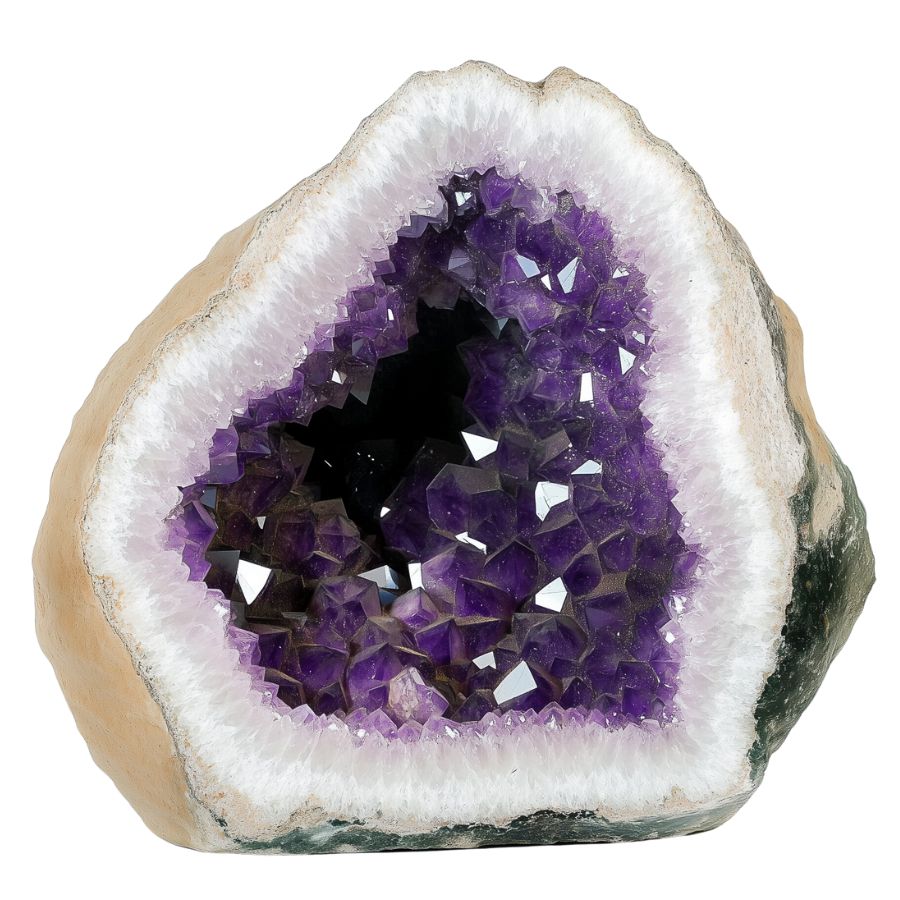
Amethyst geodes look plain on the outside, like a potato. But crack them open, and you’ll find stunning purple crystals. These crystals can be light lavender or deep purple.
The structure of crystals inside can vary widely. Some are tiny and densely packed, creating a sparkling surface. Others form large, distinct points that jut inwards.
The color range is impressive too, from pale lilac to deep royal purple. Some amethyst geodes develop unique features. “Stalactites” of amethyst might hang from the top.
In rare cases, you might find a water bubble trapped inside, a remnant from the geode’s formation millions of years ago.
Citrine Geode

Citrine geodes are eye-catching rocks with golden yellow to orange crystals inside. They sparkle when light hits them, looking like sunshine trapped in stone. The colors come from iron mixed in with the quartz.
Unlike many gemstones, citrine’s color is often evenly distributed throughout the crystal.
Most citrine on the market isn’t natural. It’s actually heat-treated amethyst. This process turns the purple amethyst into vibrant citrine. Natural citrine is rarer and often has a more subtle color.
Pyrite Geode
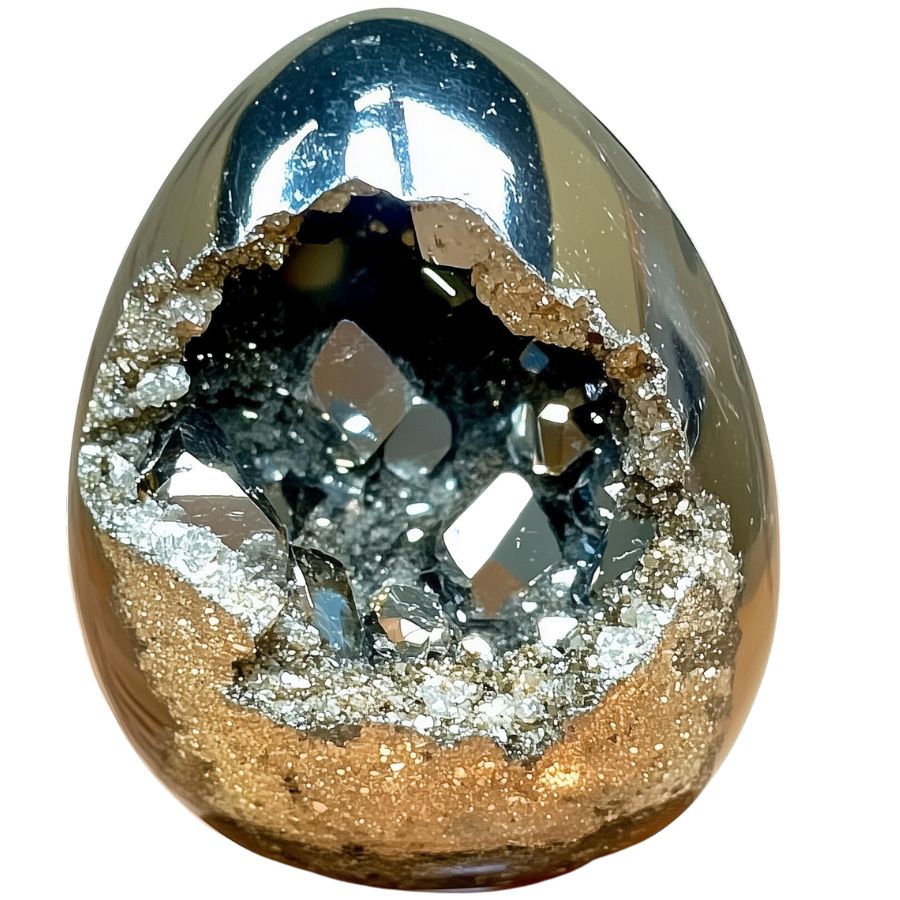
Ever cracked open a rock and found gold inside? Well, not real gold, but something that looks just like it. That’s a pyrite geode. Pyrite is called “fool’s gold” because it’s so shiny and golden.
Inside these geodes, pyrite forms in cool shapes. Sometimes it’s perfect cubes. Other times its clumps or even round balls called “pyrite suns”.
Pyrite has a fun history. People have been mixing it up with real gold for thousands of years. That’s how it got its nickname.
Selenite Geode
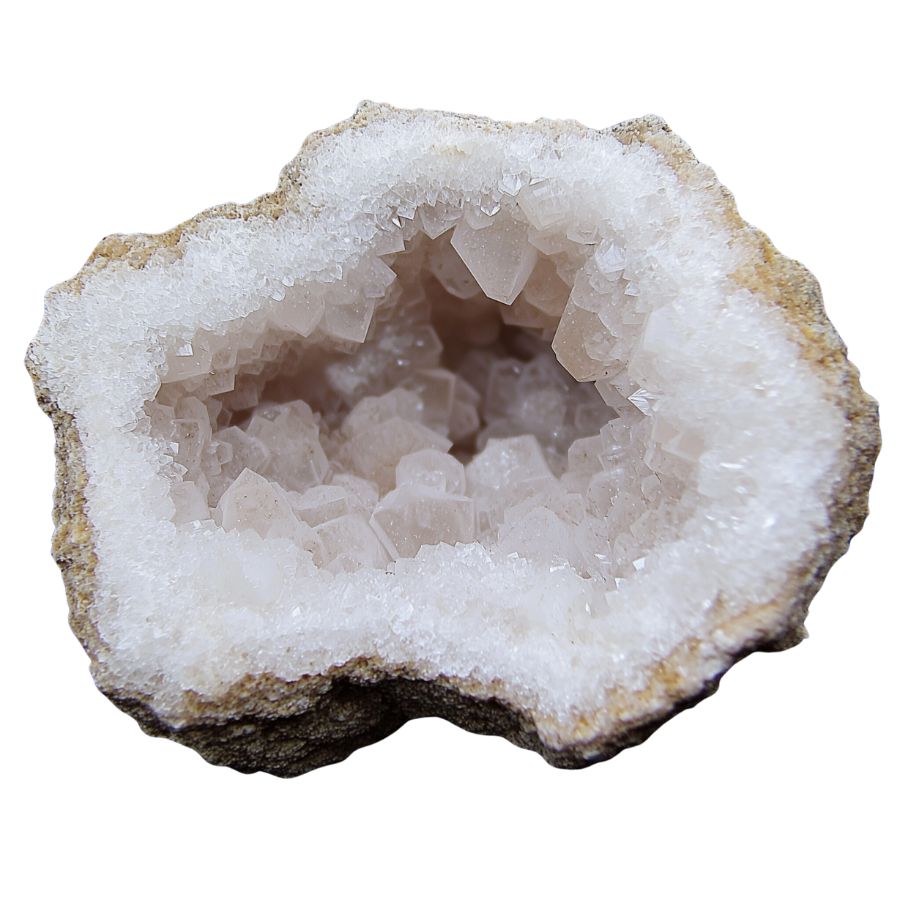
Selenite geodes stand out from the crowd. They’re white and see-through, with a glassy look. When you open one up, you’ll see crystals that look like they’re made of ice or moonlight.
Unlike harder geodes, selenite is soft. You can scratch it with your fingernail! This softness means you need to handle it carefully. But it also means selenite can be shaped into beautiful forms easily.
One cool thing about selenite is how it plays with light. Hold it up to a lamp, and you’ll see the light shine right through it. This makes selenite geodes popular for decorative lamps and light fixtures. They add a magical glow to any room.
Celestite Geode
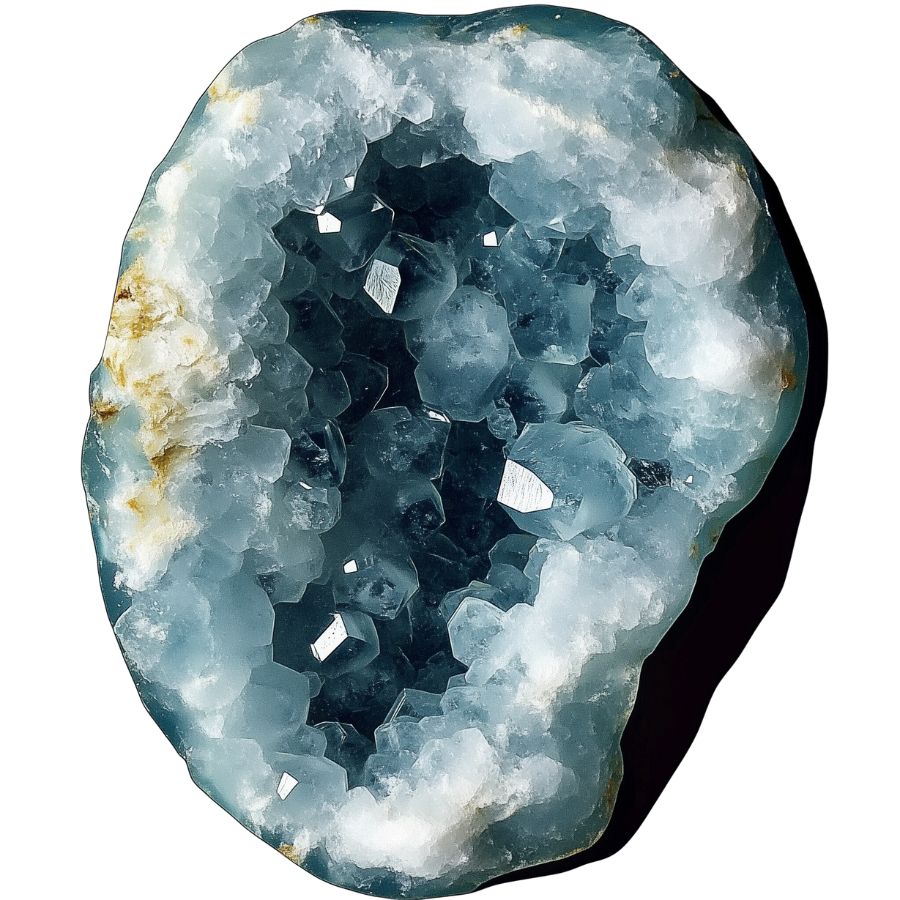
Celestite geodes are like pieces of sky trapped in rock. Their crystals are typically a delicate blue, ranging from almost colorless to deep sky blue. In rare cases, celestite can form in other colors. Pink celestite is highly prized by collectors.
One unique feature of celestite is its perfect cleavage. This means the crystals can be easily split into rhombohedral shapes.
These geodes form in a unique way. They start as nodules of a soft mineral called alabaster. Over time, this dissolves and is replaced by celestite crystals. Some celestite geodes are huge, like the famous Crystal Cave in Ohio.
Celestite isn’t just pretty to look at. It’s used to make strontium, an element with many uses. You’ll find strontium in fireworks, where it creates red colors. It’s also used in making TV screens and ceramics.
Jasper Geode
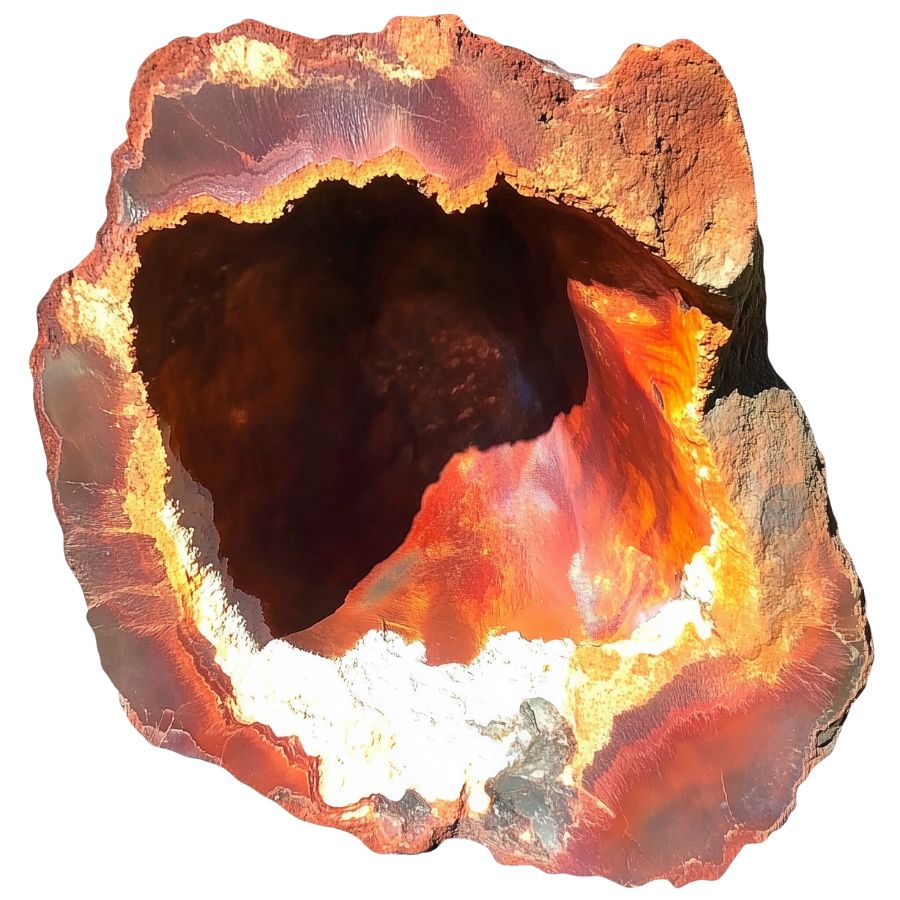
Jasper geodes are the chameleons of the mineral world. They can appear in almost any color, often with multiple hues in a single specimen. Patterns can range from solid colors to intricate swirls, bands, or spots.
One fascinating type is picture jasper. These geodes contain patterns that resemble landscapes, with “skies,” “mountains,” and “rivers” visible in the stone. Each one is like a miniature painting created by nature.
Some jasper geodes contain orbicular patterns – spherical structures that formed as the jasper solidified. These create eye-catching bull’s-eye or flower-like designs in the stone, making each piece truly one-of-a-kind.
Carnelian Geode
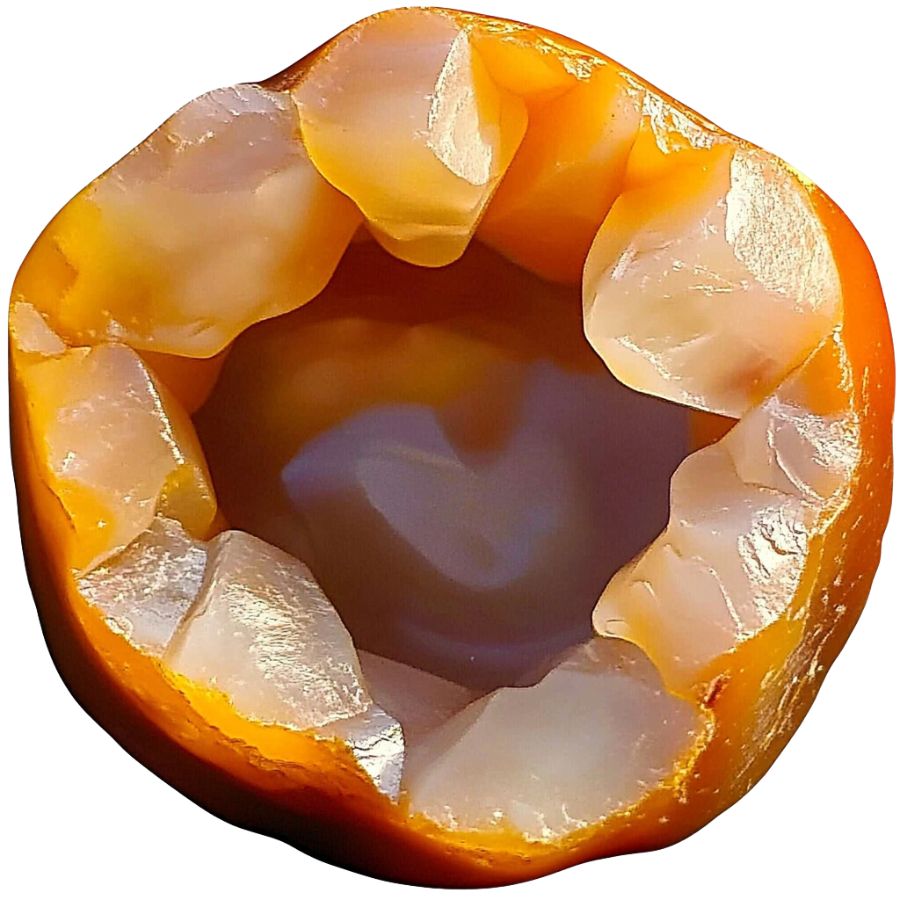
Carnelian geodes have vibrant orange to reddish-brown colors. They can be somewhat see-through, which makes them look even more interesting. The bright colors come from the iron in the stone.
These geodes stand out from other similar stones. They’re brighter than sard, which is usually darker and more brownish. And unlike agate, carnelian doesn’t have bands or stripes.
Carnelian has been popular for a long time. Ancient Egyptians and Greeks used it to make special rings. It’s tough enough for everyday jewelry.
Some people heat or dye carnelian to make its color even brighter. This makes it a favorite for both rock collectors and jewelry lovers.
Fluorite Geode

Fluorite geodes are like nature’s rainbow. They come in many colors – purple, green, blue, yellow, and sometimes even clear or black. When you open one up, you might see cube-shaped or eight-sided crystals inside.
What makes fluorite special is that you can often see more than one color in a single stone. This is different from many other geodes. Also, fluorite has a unique way of splitting when it breaks.
A cool fact: fluorite glows blue under ultraviolet light. This was first discovered back in 1852. Because of its many colors and this glowing ability, fluorite is sometimes called the “most colorful mineral in the world.”
Scolecite Geode
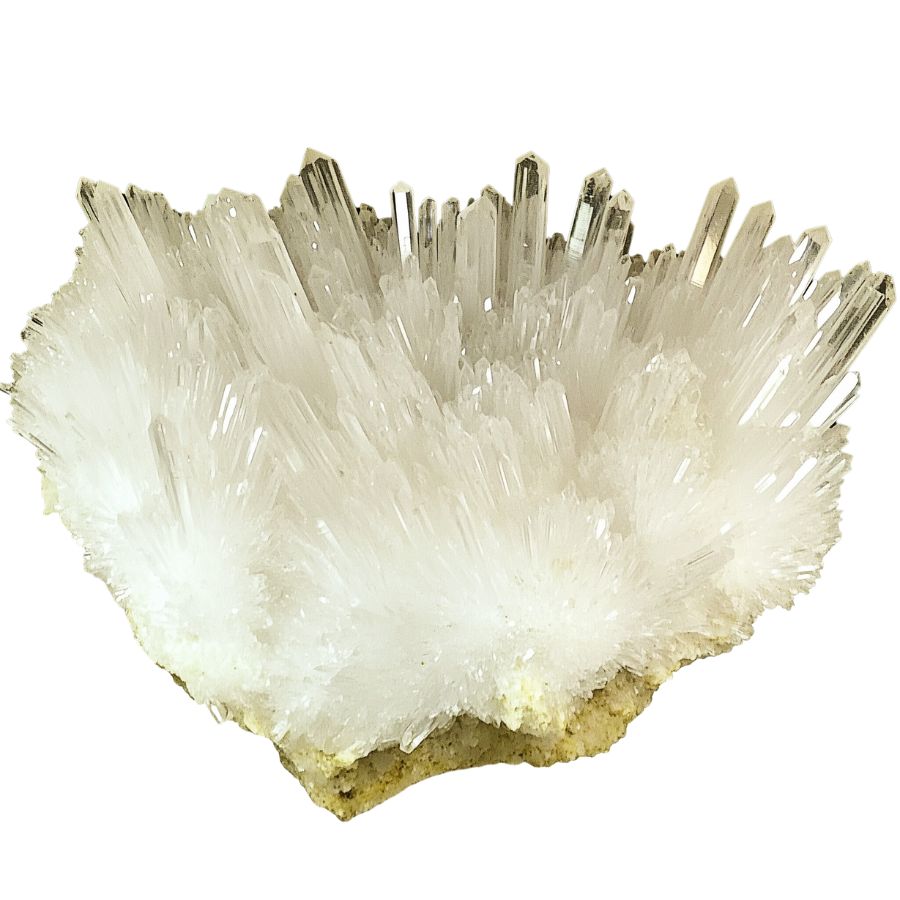
Scolecite geodes are like tiny crystal caves. They’re usually white or colorless, but sometimes you might find pink, yellow, or green ones.
What makes them special is the crystals inside. They look like thin needles or delicate hairs, all pointing out from the center.
These geodes are different from others because of their crystal shape. Instead of blocky or chunky crystals, scolecite has these fine, hair-like ones. This gives them a unique, delicate look.
Scolecite has an interesting property – it can hold a lot of water in its structure. This means it can absorb and release water easily. This makes scolecite useful in various ways, not just as a pretty rock to look at.
Apophyllite Geode

Apophyllite geodes are like nature’s disco balls. They often have dark or black crystals inside a hollow rock. These crystals can be see-through or slightly cloudy, with cube-like or flat shapes.
What makes apophyllite geodes stand out is how the crystals form. They grow in round clusters that look like tiny disco balls. This unique formation is rare and makes them special to rock enthusiasts.
Collectors really prize these “disco ball” clusters. They’re not common, which makes them valuable to people who love unusual rocks. The way apophyllite crystals catch and reflect light adds to their appeal, making them fascinating to look at and study.
What Rough Geode Looks Like
Identifying a rough geode might seem tricky, but with a few tips, you can spot one even if you’re not a rock expert. Here’s how you can do it.
Look for a Rounded Shape
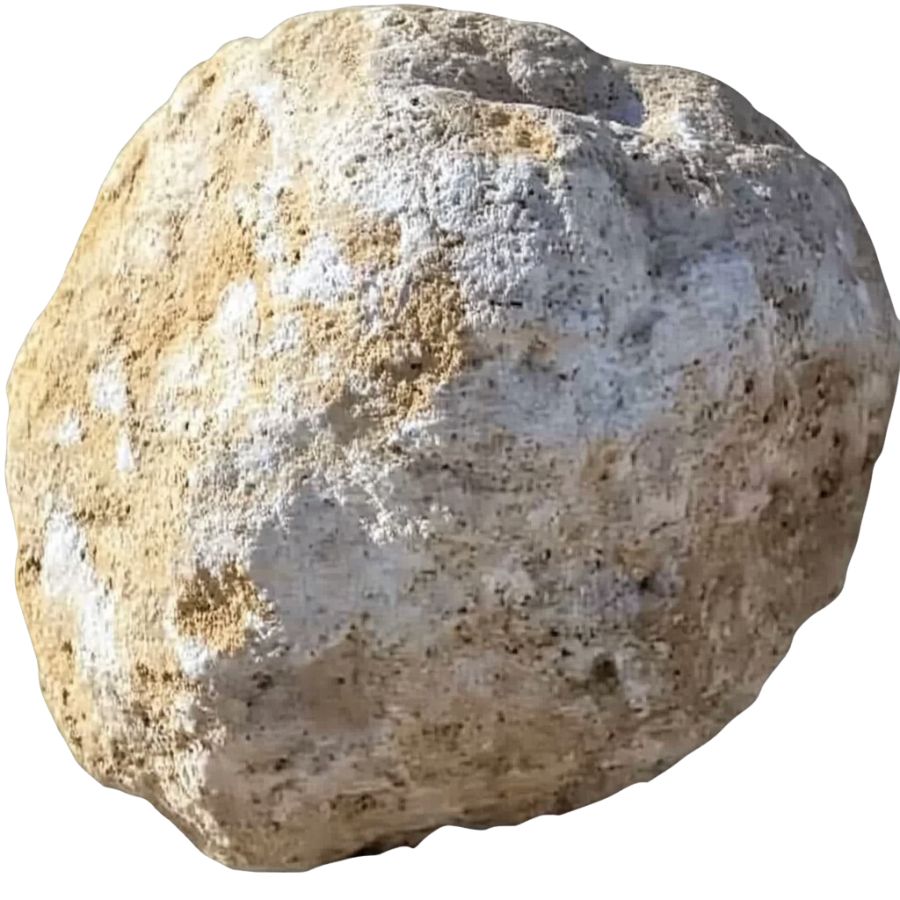
A rough geode often has a rounded or egg-like shape. It might not be perfectly round but look for a generally bulbous form.
When you’re out searching, skip the flat, jagged rocks. Geodes usually have smoother exteriors because they’ve been rolling around in rivers or other environments for a long time.
Check for a Dull, Bumpy Surface
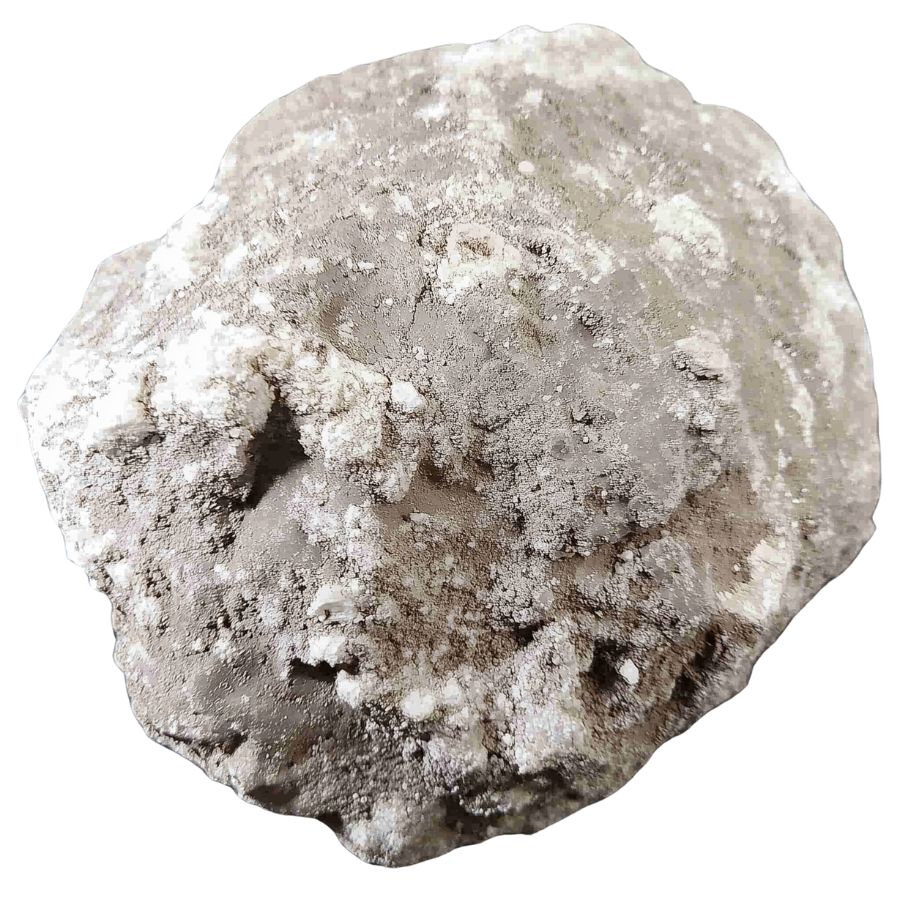
The outside of a geode isn’t usually shiny. Instead, it’s dull, bumpy, and a bit rough.
Imagine a potato or a clump of dirt with some bumps and dents. That’s how a geode might look before it’s cracked open.
The outside won’t give away much of what’s inside, so don’t be fooled by its ordinary appearance.
Test the Weight
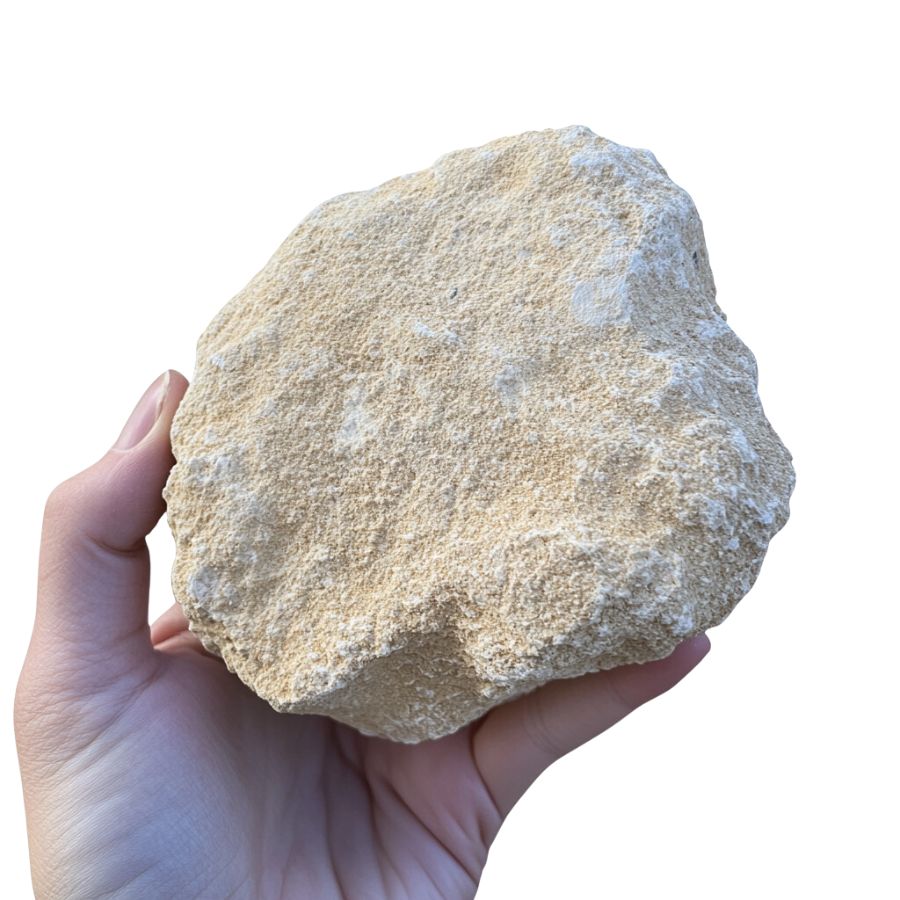
Pick up the rock. Does it feel lighter than it looks? That’s a good sign!
Geodes are hollow or partially hollow, which makes them lighter than solid rocks of the same size. If it feels unexpectedly light, you might have found something special.
Look for Tiny Crystals or Mineral Patches

Sometimes, you can spot small crystals or mineral deposits on the outside. These could look like tiny sparkles or specks of color.
While the outside of a geode is usually dull, a little peek of what’s inside might show through. Keep an eye out for these hints, especially if you’re in a known geode-rich area.
Tips on Where to Look
Once you get to the places we have listed below there are some things you should keep in mind when you’re searching:
Explore Riverbeds and Streams
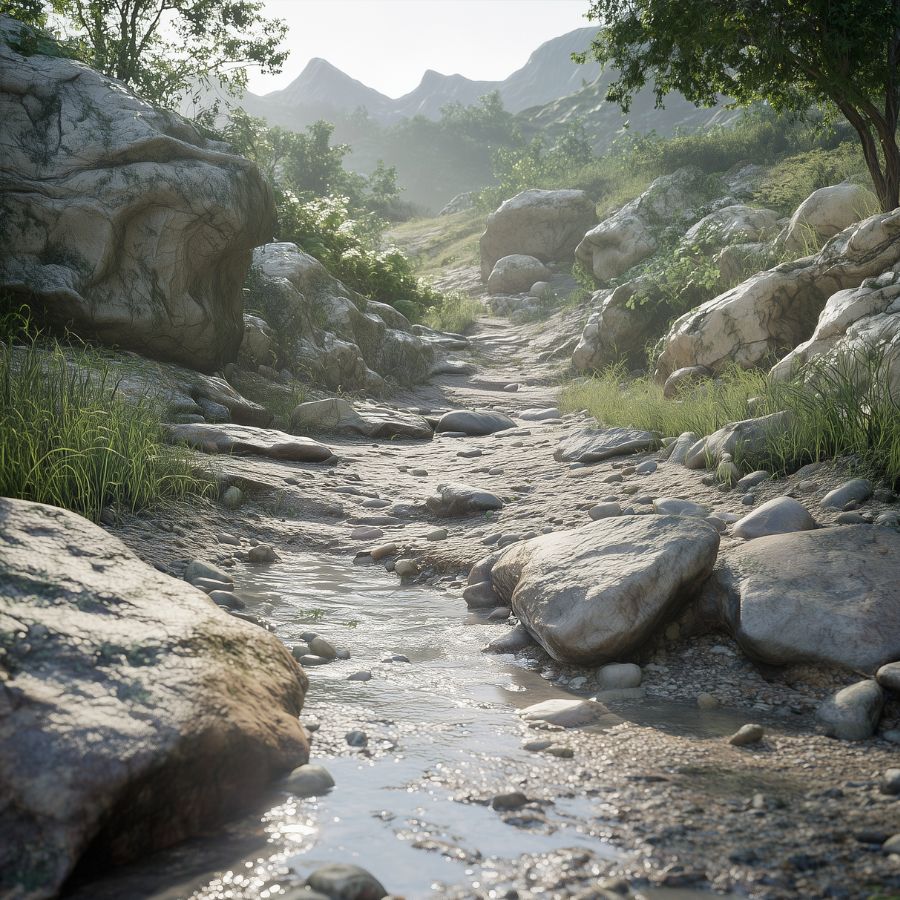
Geodes often form in riverbeds or streams. Water flow smooths out their rough edges and deposits them in these areas.
When exploring, focus on gravel bars or the edges of rivers where rocks naturally gather.
Search in Sedimentary Rock Layers
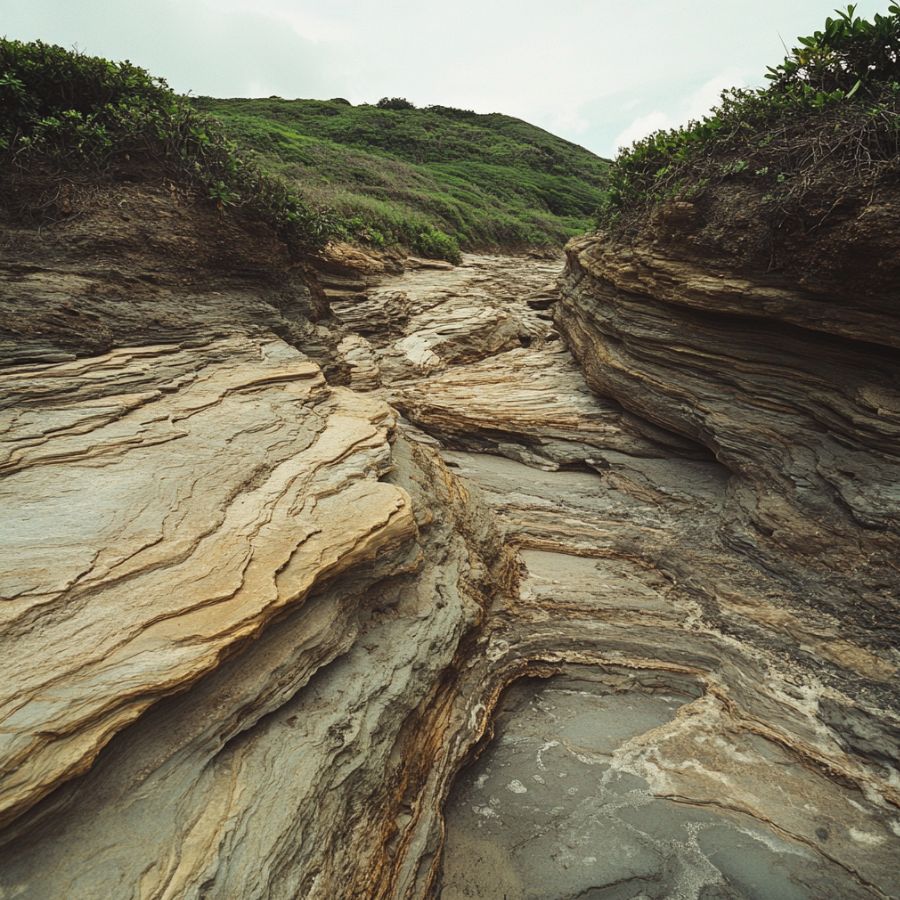
Sedimentary rocks, like limestone, are prime spots for geodes. These rocks form in layers over time, trapping minerals inside.
Look for areas where sedimentary rocks are exposed, such as cliffs or road cuts.
Visit Old Mines or Quarries
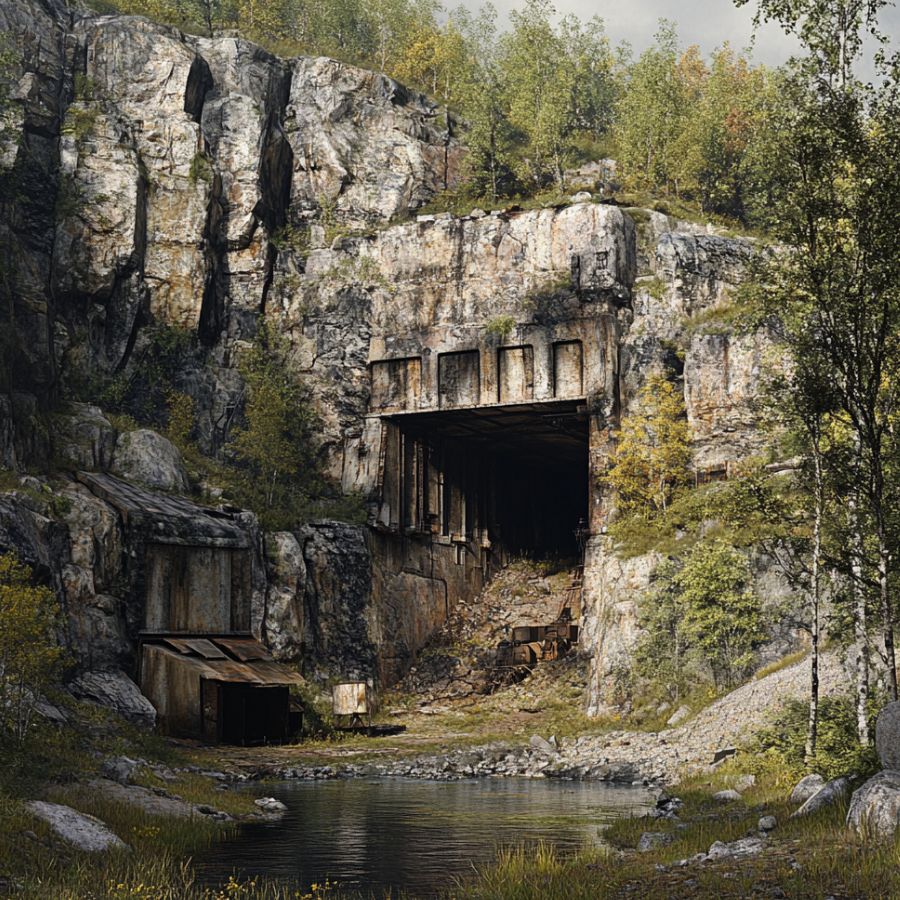
Abandoned mines and quarries are excellent spots for geode hunting.
Workers often missed geodes while digging for other materials. Explore the tailings or leftover rock piles for hidden treasures.
Explore Hills and Rock Outcrops
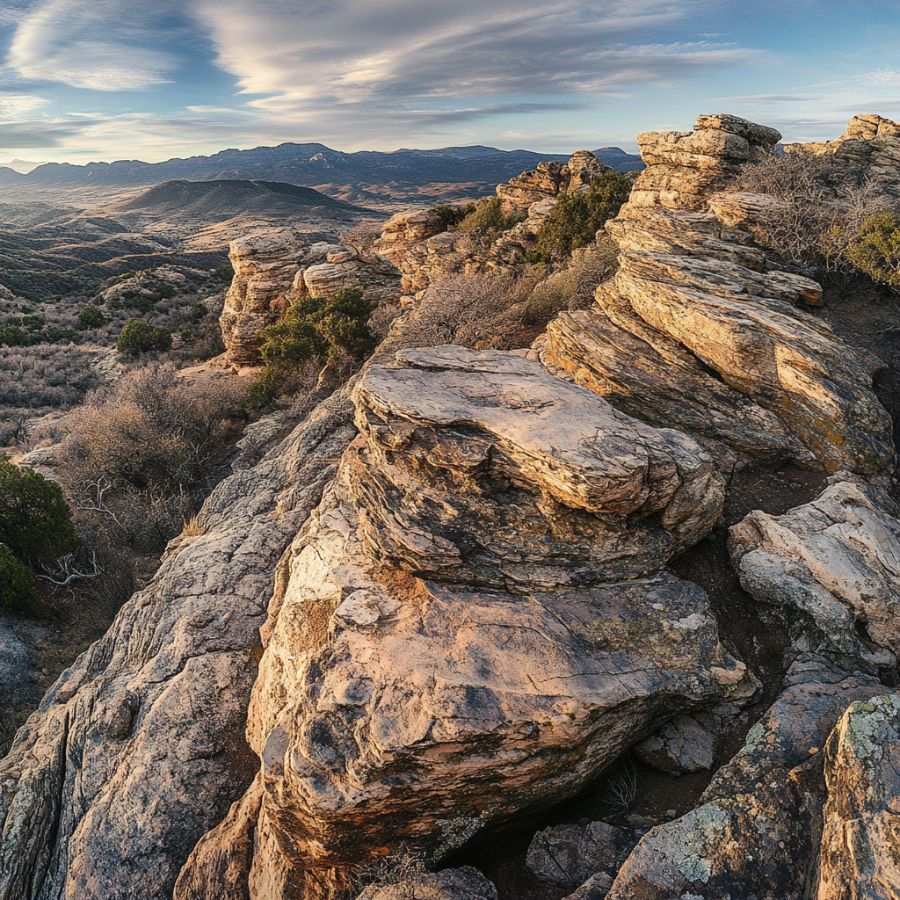
Hills and rocky outcrops often reveal geodes. As erosion wears away the softer rock, it exposes the harder geodes.
Look for areas with exposed rocks and keep an eye out for rounded shapes.
The Types Of Geodes Found In Oregon
Oregon is home to several varieties of this natural wonder, and how much a geode is worth depends on it. Below, we have listed some of the types of geodes you are likely to come across in our region.
- Agate geodes
- Black Agate geodes
- Chalcedony geodes
- The deep experience and understanding of our team about the area
- Recommendations from local groups and clubs
- How easy it is to get the a particular location
- Safety and potential hazards when collecting
- Weighing private and public locations
- The ability for both experienced and novice geode enthusiasts to find great samples
With these factors in mind we’ve been able to put together a fantastic list that just about anyone can use!
The Best Places To Find Geodes in Oregon
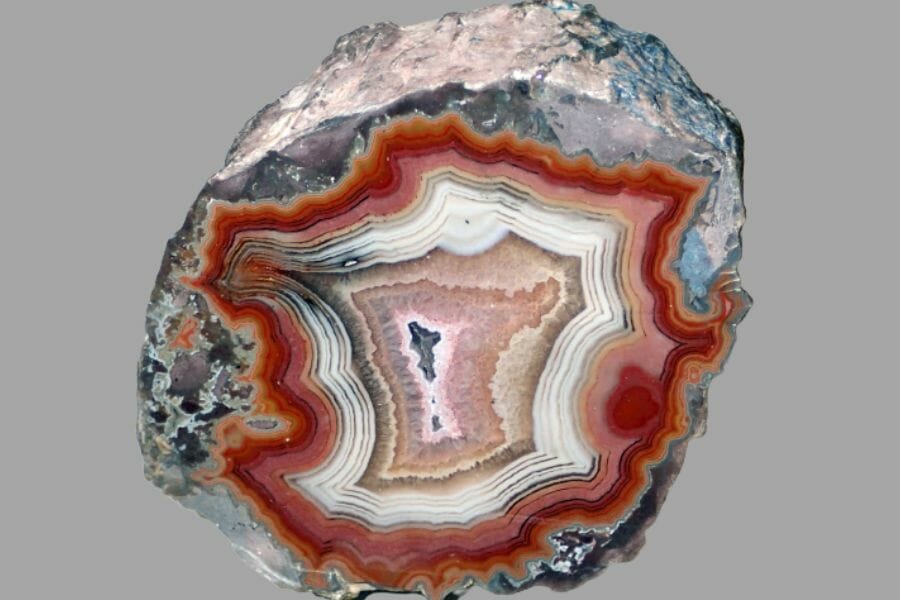
You may be familiar with the best places to find gems in Oregon. Unfortunately, not all of them contain geodes. The locations we’re sharing with you below may not be as well-known, but they are definitely the best places to visit if you want to find geodes here.
Always Confirm Access and Collection Rules!
Before heading out to any of the locations on our list you need to confirm access requirements and collection rules for both public and private locations directly with the location. We haven’t personally verified every location and the access requirements and collection rules often change without notice.
Many of the locations we mention will not allow collecting but are still great places for those who love to find beautiful rocks and minerals in the wild without keeping them. We also can’t guarantee you will find anything in these locations since they are constantly changing.
Always get updated information directly from the source ahead of time to ensure responsible rockhounding. If you want even more current options it’s always a good idea to contact local rock and mineral clubs and groups
Steens Mountain
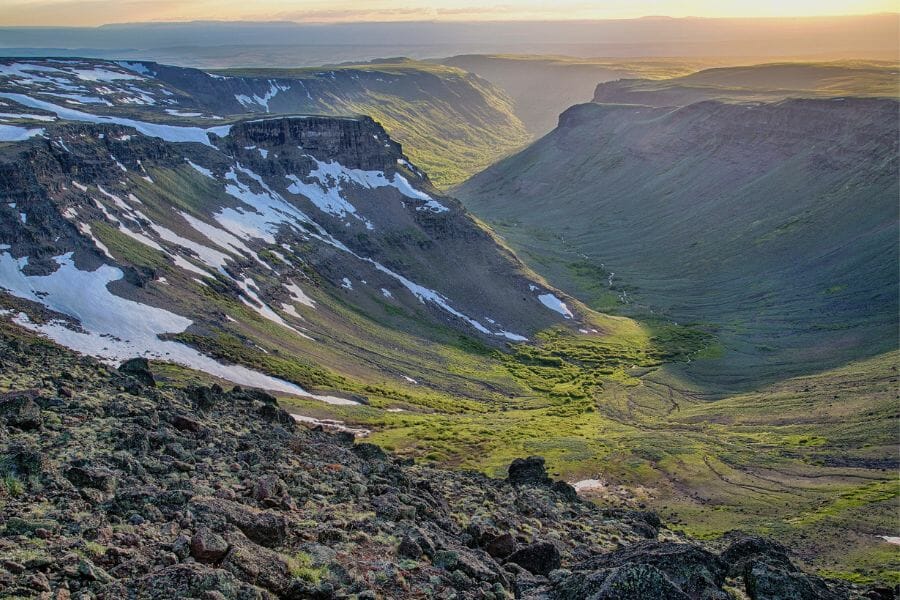
Part of the Great Basin, Steens Mountain is located in the southeastern part of our state. It’s a big old mountain rising to over 9,000 feet. Its terrain is rugged and wild, with steep cliffs and canyons. What’s fascinating about its geology is that it’s made up of volcanic rocks that were formed millions of years ago. You can see layers of ash and lava all over the place.
As you might’ve already guessed, getting here is a bit of a trek. You’ll have to drive for miles on dirt roads (no cell phone service out here!), but once you get here, you’ll feel like you’re on top of the world— and atop a pile of geodes just waiting to be discovered.
But before you plan your trip, make sure to check the latest collecting guidelines of Oregon.
Where we found geodes at Steens Mountain
Lucky for you, there are a number of specific spots at Steens Mountain where you can find geodes! Particularly, these are the west side of the mountain via route 78 of Burns and all the regional land surfaces, draws, and washes on the east side of the mountain via the Alvord Ranch, Andrews, and Fields.
DON'T MISS OUT ON ANY GREAT FINDS!
While you're out searching for Geodes you're going to find a lot of other interesting rocks and minerals along the way. The last thing you want to do is toss out something really interesting or valuable. It can be easy to misidentify things without a little guidance.
We've put together a fantastic field guide that makes identifying 140 of the most interesting and valuable rocks and minerals you will find REALLY EASY. It's simple to use, really durable, and will allow you to identify just about any rock and mineral you come across. Make sure you bring it along on your hunt!
Powder River
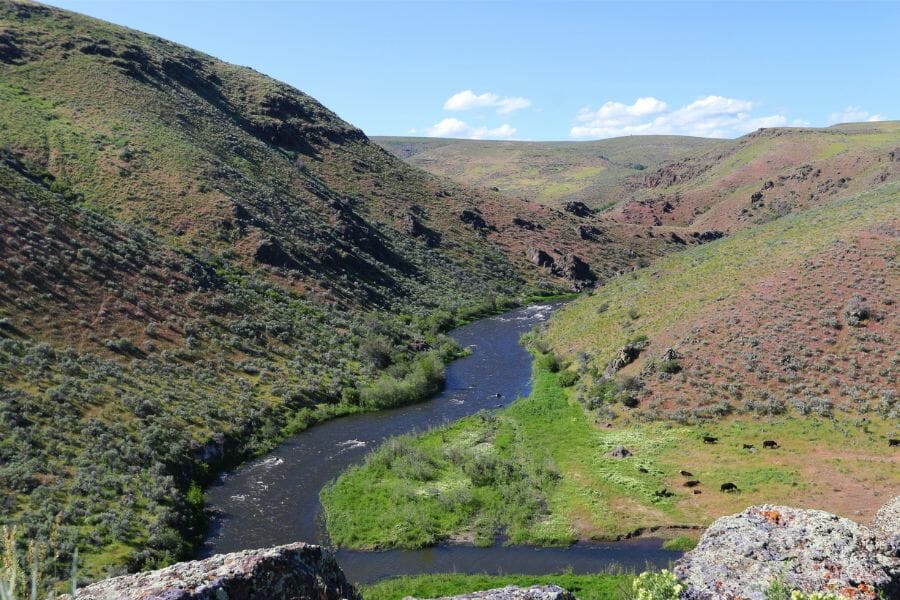
Aside from being a sweet spot for some outdoor fun, Powder River is also one of the best locations to find geodes! The river runs through the northeastern part of our state, and it’s surrounded by beautiful countryside.
Flowing for about 150 miles, the Powder River is a tributary of the Snake River. Its terrain is mostly hilly and covered with sagebrush. There are some steep canyons along it, too, that make for some pretty epic views. The area is rich in gold, which is why there are still some active mines in our region.
To go here, there are a few highways that run through the area. Overall, we recommend Powder River if you’re after some amazing geode hunting adventure.
Where we found geodes at Powder River
If you’re going geode hunting here, the best areas to explore is in the gravels of Powder River along the Richland Valley. One of the beautiful samples you can get your hands on here are Chalcedony geodes lined with drusy Quartz crystals.
Calapooia River
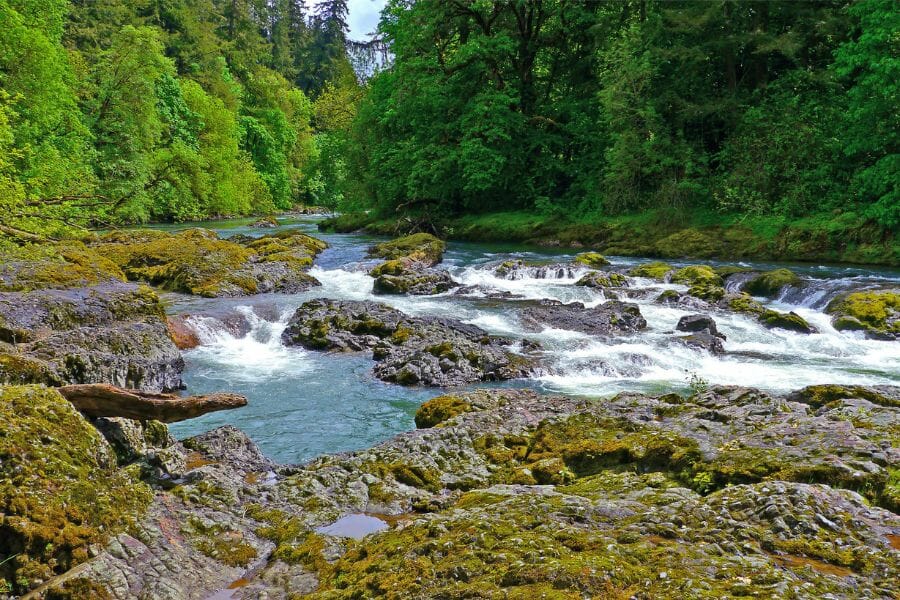
Calapooia River is a real gem hidden away in the middle of our state. It’s located in the foothills of the Cascade Range, surrounded by some amazing scenery.
The Calapooia River flows for about 50 miles through the forested mountains. Its terrain is rugged and wild, with plenty of steep cliffs and rocky outcroppings. Geologically, it’s pretty interesting, too. The area is known for its gold deposits. There are also some hot springs nearby, which are definitely worth checking out.
To reach this place, you’ll have to drive on some dirt roads because there aren’t any major highways nearby. But once you’re there, you’ll be blown away by the natural beauty of the area.
Where we found geodes at Calapooia River
Calapooia River is part of the Sweet Home Petrified Forest in Linn County. If you’re planning to visit here, you can find geodes along the shores of this river or along its nearby Ames Creek.
Hart Mountain
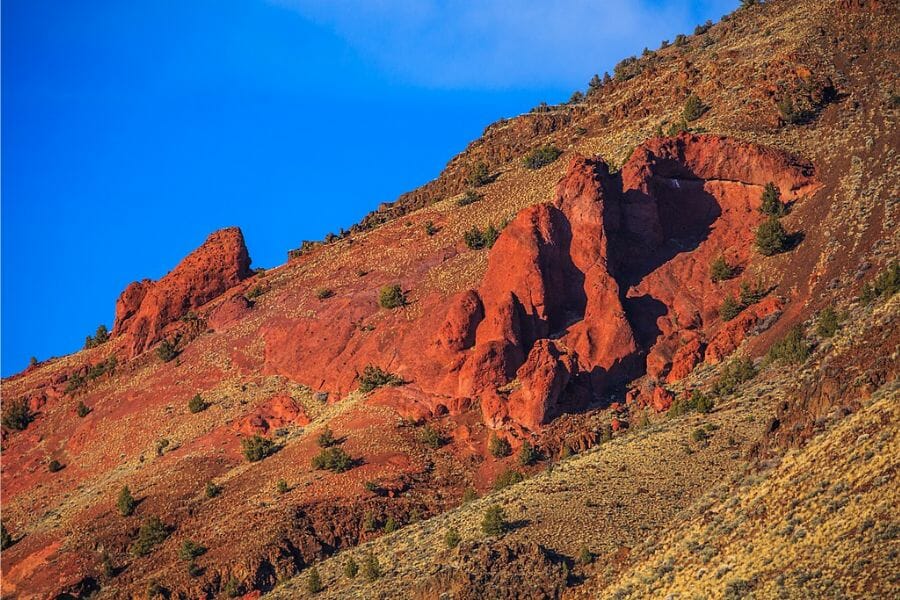
Hart Mountain is located in the southeastern part of our state. Its geography is super unique since it’s a fault-block mountain— a huge block of rock that’s been lifted up and tilted. Its terrain is rugged and rocky, with some steep cliffs and canyons.
The geology of Hart Mountain is pretty fascinating, too. There are some hot springs in the area, and the mountain is home to a variety of different rocks and minerals. There are also some sweet views of the surrounding desert landscape.
If you want to go here, you have to be ready for a bit of a challenge. The road here is pretty rough and there aren’t many signs, so it’s easy to get lost. But if you’re up for an adventure, it’s definitely worth it.
Where we found geodes at Hart Mountain
The west flank and draws of Hart Mountain or Warner Peak in Plush area is where you can find some of the most amazing geodes here.
Cummins Creek
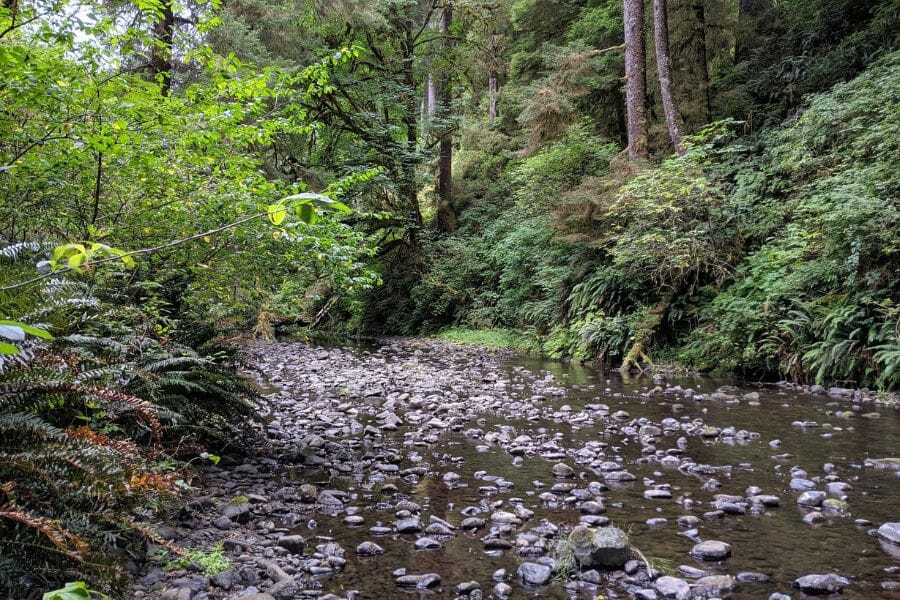
Located on the coast, in the heart of the Siuslaw National Forest, Cummins Creek is a fantastic spot for nature lovers. It’s surrounded by tall trees and lush vegetation. Its terrain is rocky and hilly, with plenty of streams and waterfalls to check out.
The geology of Cummins Creek is pretty rad, too. The area is known for its volcanic rocks, and there are some cool geological formations to check out. There are also some sweet views of the ocean from the trails.
What’s even more amazing is that getting to Cummins Creek is fairly easy. There are a few different trailheads to choose from, and the roads are well-maintained. Whether you’re into geode hunting or other outdoor activities, you’ll surely enjoy this place!
Where we found geodes at Cummins Creek
You can find chalcedony geodes if you go 19.6 miles north on US-101, 0.75 miles south of the Lincoln County border, and in and near the mouth of Cummins Creek.
Other Great Places To Dig For Oregon Geodes
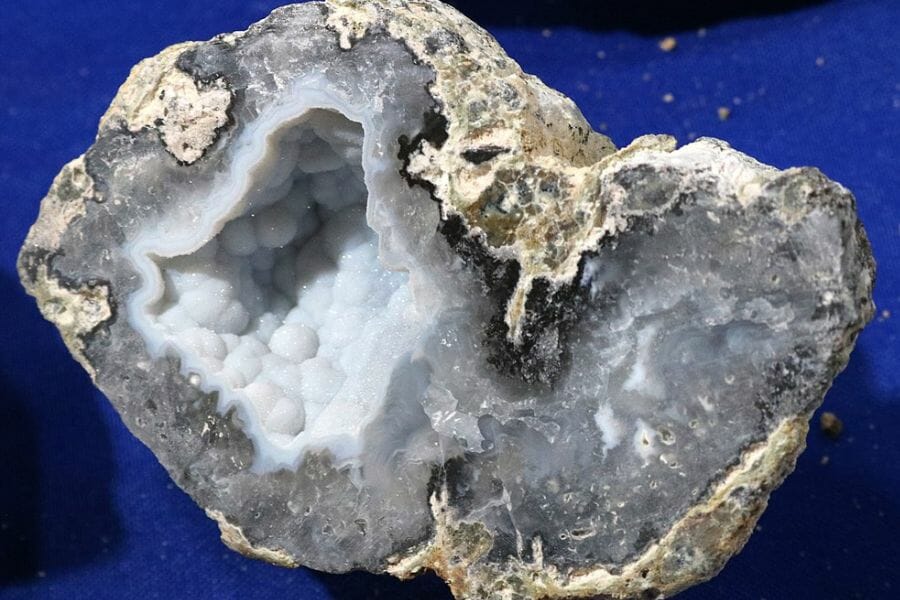
While the spots we mentioned earlier are our top recommended locations to find geodes in Oregon, we have numerous other recommendations for you. Below is a table of these places categorized by county.
Our recommendations by county
| County | Location |
| Baker | In volcanic rocks and in Powder River gravels along the Richland Valley |
| Baker | Large triangular area from Baker to Richland to Durkee and back to Baker |
| Baker | he Huntington area near MM-393 on SR-30 |
| Harney | The Steens Mountain in southeast corner of county |
| Harney | West side of the Steens in Burns from Rte. 78 |
| Harney | All regional land surfaces, draws, washes of the east side of the range in Alvord Ranch, Andrews, and Fields |
| Harney | Area of the Harney Valley |
| Jefferson | Area of Ashwood |
| Jefferson | General region of Madras |
| Jefferson | General area surfaces, draws, washes of Willowdale |
| Lake | All surrounding desert area of Lakeview |
| Lake | West flank and draws of Hart Mountain/Warner Peak in Plush area |
| Lane | In and near the mouth of Big Creek |
| Lane | In and near the mouth of Tenmile Creek |
| Lane | In and near the mouth of Cummins Creek |
| Lincoln | Beach area gravels of Yachats |
| Lincoln | At the mouth of the Yachats River |
| Lincoln | 2 miles north of the mouth of the China Creek |
| Linn | The Sweet Home Petrified Forest, especially along Ames Creek and the shores of the Calapooia River |
| Malheur | Area immediately surrounding Nyssa town |
| Malheur | 6.9 miles northeast in the Skull Springs area |
| Wasco | South flanks of the Mutton Mountains area |
| Wasco | Area of Antelope |
Common Geode-Hunting Questions
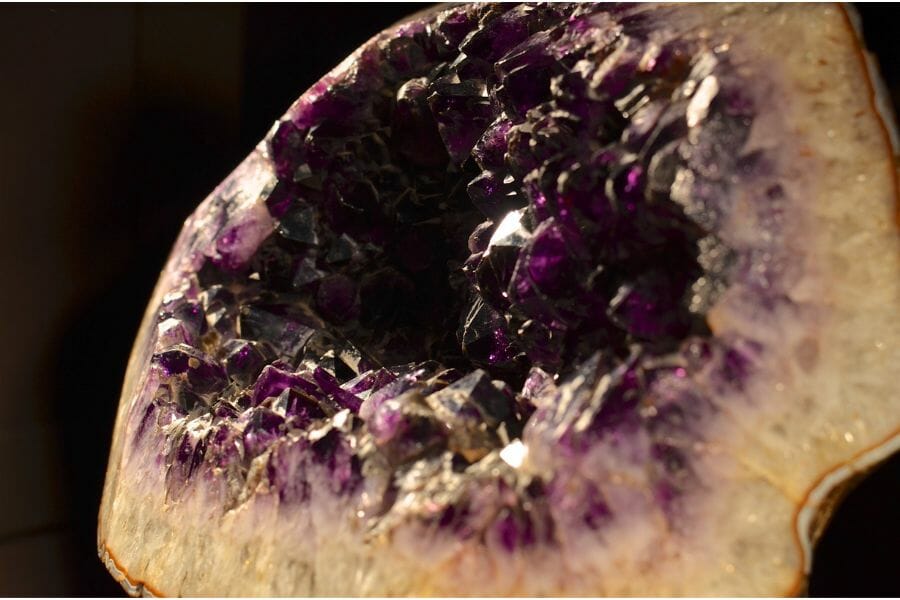
During our research on geodes in Oregon, we came across some commonly asked questions. We presume that you might have these questions as well, so we will answer them here:
Where can you find amethyst geodes in Oregon?
Unfortunately, amethyst geodes do not naturally occur in Oregon. Although you can’t exactly dig for them here, there are plenty of local shops where you can purchase them from. We made a list of some of them below.
Is it illegal to collect geodes in Oregon?
It’s legal to collect geodes in Oregon, but it’s crucial to follow our state’s local collecting laws. If any regulations exist on government land, ensure that you are complying with them. Additionally, it is important to seek permission before exploring any private property.
The Best Places To Buy Geodes In Oregon
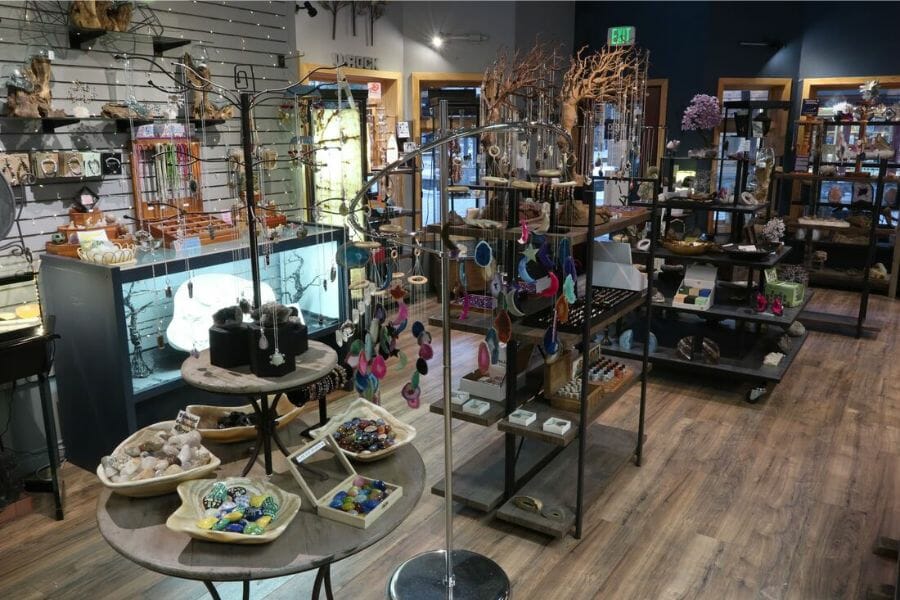
For geode enthusiasts and collectors, finding geodes in their natural environment is an incredible feeling. But the tedious process of finding them may not be suitable for everyone. If you fall into this category and wish to acquire geodes without putting in too much effort, we’ve got you covered!
We made a list of our some of the best local shops where you can find and buy different types of geodes:
- Richardson’s Rock Ranch – 6683 Hay Creek Rd, Madras, OR 97741
- Amazon – It’s amazing how vast the geodes selections are in Amazon. There are even whole kits to help you break them open!
- Ed’s House of Gems – 7712 NE Sandy Blvd, Portland, OR 97213, United States
- Roadrunner Rockhounds – 160 W 2nd St, Yachats, OR 97498
- Rock Your World: Pacific NW Rock, Gem & Jewelry Gallery – 3203 SE Hwy 101, Lincoln City, OR 97367
- Sunriver Rocks – 57100 Beaver Dr, Sunriver, OR 97707
- Best Crystals – 6635 N Baltimore Ave # 216, Portland, OR 97203
- Ore Rock On – 18403 S Clear Acres Dr, Oregon City, OR 97045
- Flower of Life Crystals – 40 N Main St, Ashland, OR 97520
Additional places to find geodes in nearby states
Check out our guides for nearby states if you’ve already tried all of our suggestions above or if you’re planning a trip outside of the state:
If you have any recommendations for our list please leave a comment below!


